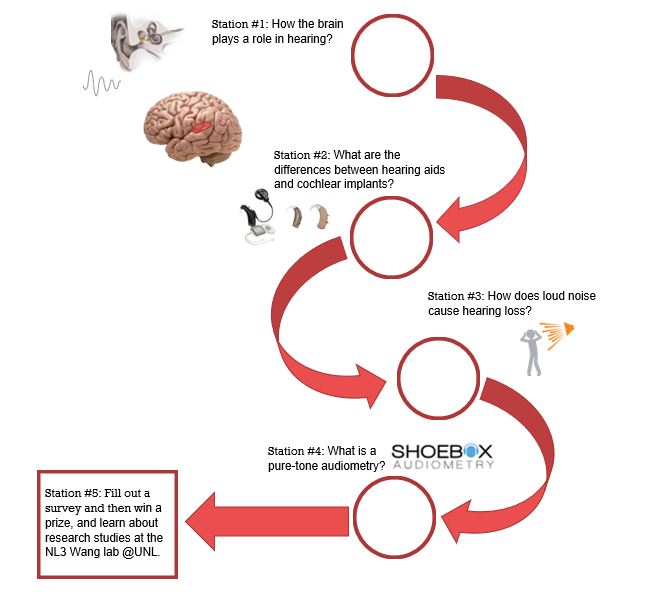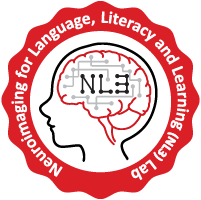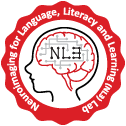On February 23rd, Morril Hall on UNL main campus held Sunday with a Scientist with Dr. Yingying Wang. Dr. Wang and her Neuroimaging for Language, Literacy and Learning Laboratory (NL3) team provided visitors the opportunity to learn about “The Science of Hearing”.

From 12:30 to 3:30 pm, visitors self-toured four educational and interactive stations inside the main atrium of Morril Hall. We helped an estimated 150-200 families to learn about the complexity of the ear and the impact of hearing loss. Visitors collectively learned which part of the brain is in charge of processing different sounds, and the anatomy of the auditory system. Additionally, the NL3 team assisted visitors to understand how to protect their ears from noise-induced hearing loss. Some stations helped children to understand how hearing tests are performed and the abilities of cochlear implants to restore hearing loss. Most importantly, visitors of all ages were able to find answers to questions about hearing devices and hearing tests. For example, “What are the differences between hearing aids and cochlear implants?” “What is a Pure-Tone Audiometry Test?” “How does the brain play a role in hearing?” The questions were answered at designated stations managed by an NL3 member with a deep understanding of the topic.
Station Road Map

When entering the exhibition, each visitor was given the road map showing above. They were directed to go through each station to win a star for each circle in the road map. After they completed the road map, they can go to the survey stations to answer some questions and draw a prize. For younger children, we set up a drawing table with the sketch drawings of the anatomy of the auditory system and brain. Station #1 teaches visitors how sounds travel through the outer, middle, inner ear and then get processed by the brain. Children and their parents learn that the auditory nerve transferred sound signals to the brain. Station #2 teaches the differences between hearing aids and cochlear implants, two primary methods for improving hearing. Children and their parents watched animation and images for learning to differentiate sounds from a cochlear implant or from a hearing aid. At station #3, two NL3 team members who are currently audiologist students offered hearing tests using portable hearing test devices (known as audiometer). Children would wear headphones and determine whether they heard the tone sounds. The portable device is a state-of-the-art boothless audiometer called “shoebox ”, which allows a reliable hearing test without a sound booth. At the station #4, children and their parents could use headphones to learn about the damage of loud noises. The goal of this station is to advocate hearing protection for loud noises and educate people on the healthy decibel range that will not damage their hearing in the long term.
This research event successfully provided the general public with the interactive learning stations to get a better understanding of hearing science. We received many positive comments and are definitely going to do this again in the near future.

Station 1 
Station 2 
Station 3 
Station 4 
Station 5 
Coloring Table




